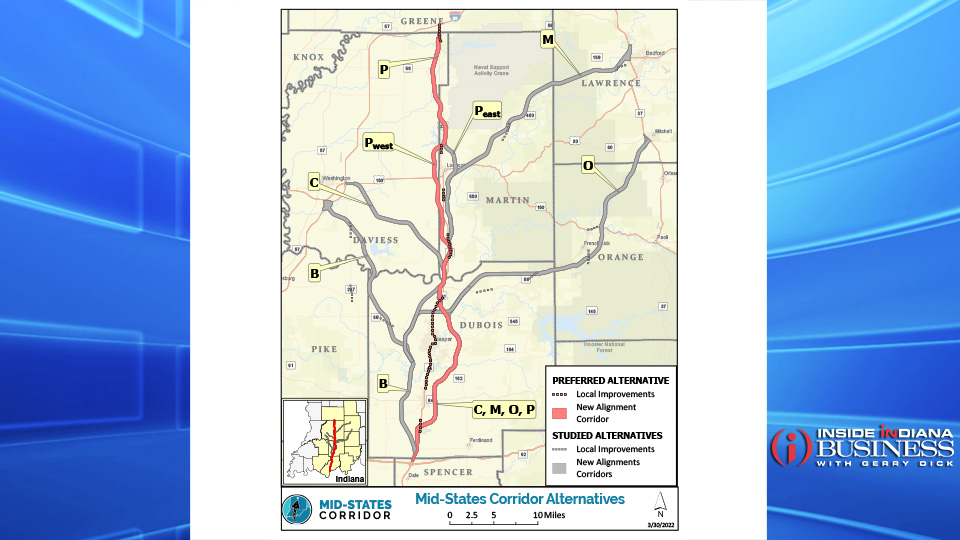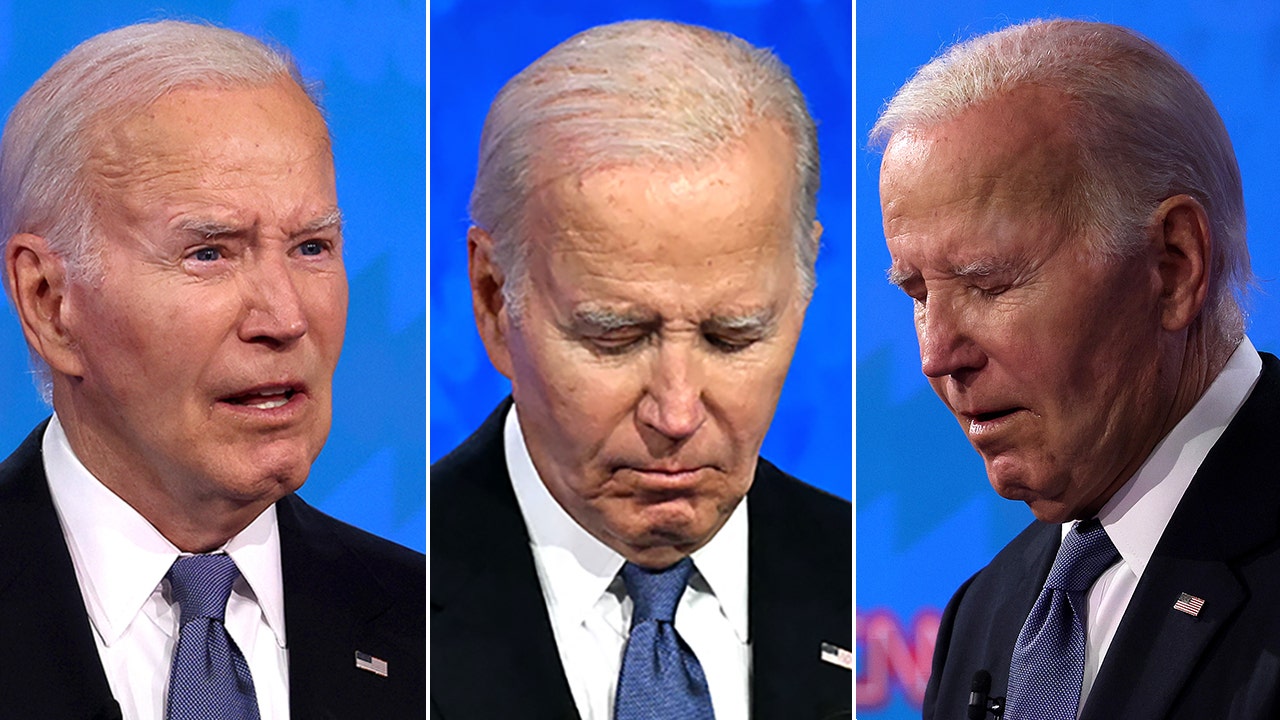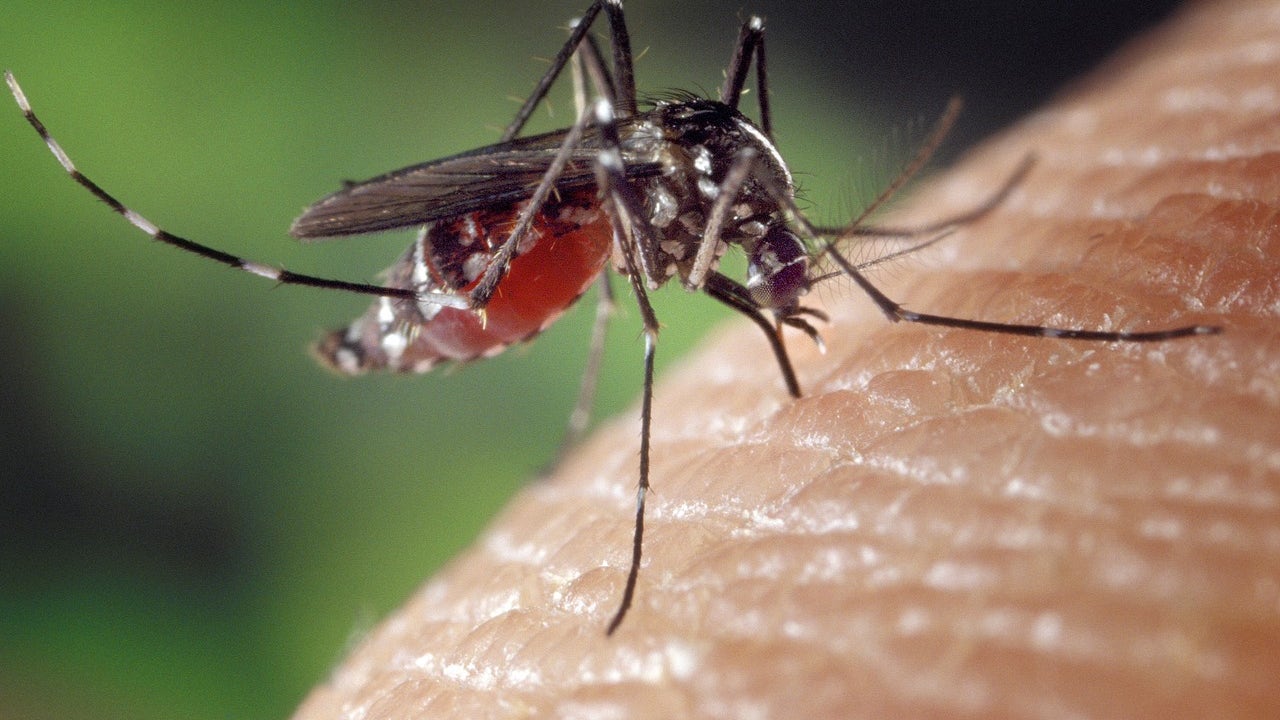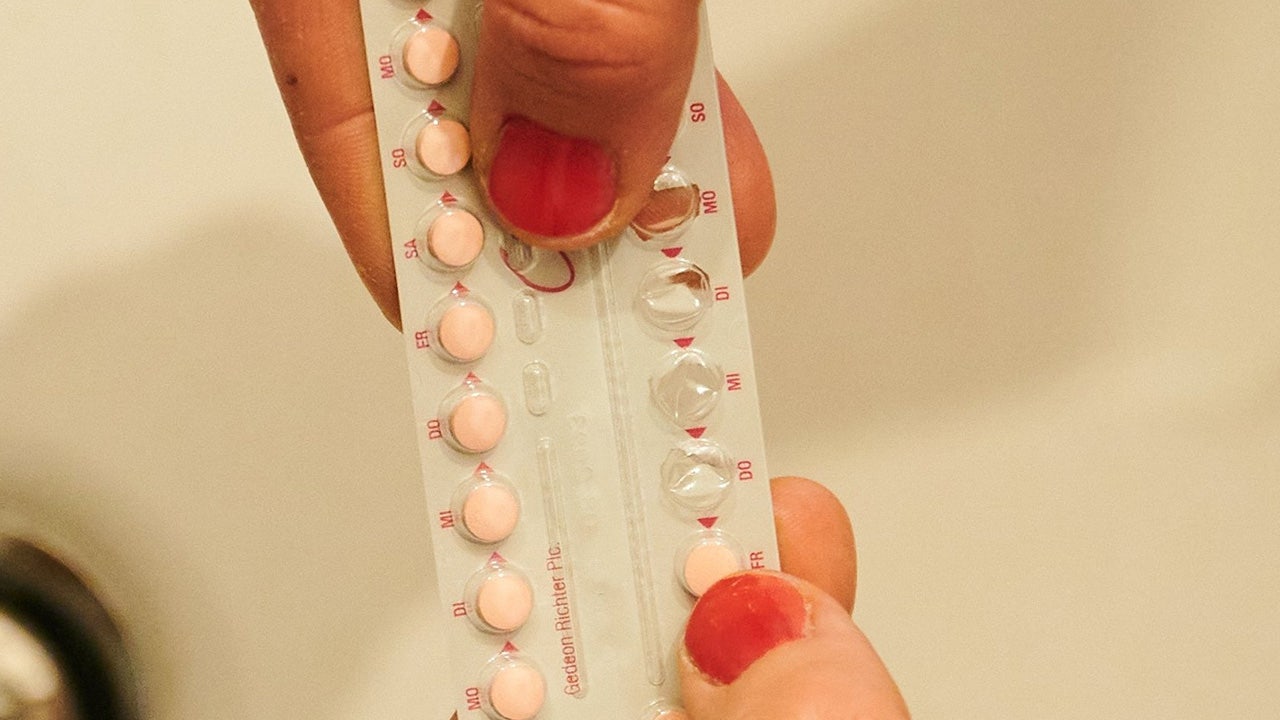Indiana
Indiana hospital prices 8th-highest in nation, study finds, but hospitals dismiss analysis • Indiana Capital Chronicle

U.S. Sen. Mike Braun — the Republican nominee for Indiana governor — made a surprise appearance at the National Healthcare Price Transparency Conference Monday, earning recognition for his work on health care price transparency on the federal level.
Conference emcee Gloria Sachdev, the president and CEO of Employers’ Forum of Indiana, presented both Braun and fellow U.S. Sen. Bernie Sanders of Vermont with an award recognizing them as “Champions of Healthcare Price Transparency.” The two, at opposite ends of the political spectrum, worked together on a measure to tackle transparency for hospital and insurer pricing.
“This is reforming the system, not more government spending on it,” Braun said. “I’ll keep pushing hard for the five months or so that I’ve got left (in Congress). Hopefully we‘ll see that maybe cascade further. If not — and if I’m successful in November(‘s general election) — I’m going to be the most entrepreneurial governor the country’s ever seen on fixing health care.”
Braun’s appearance coincided with the release of the latest hospital prices study by the RAND Corp., a think tank, which found Indiana’s hospital prices were 8th-highest in the nation. Also on Monday, the Employers’ Forum of Indiana launched Sage Transparency 2.0, a dashboard providing cost breakdowns and revenue information for hospitals.
The Indianapolis conference drew nearly 200 in-person attendees and dozens more online, with speakers like entrepreneur and venture capitalist Mark Cuban, national accountant experts, state legislators and patient advocates. The forum, which hosts the conference, seeks to improve health care transparency, prices and quality with an emphasis on the value for employers.
Indiana’s hospital lobbying organization continued to push back against the RAND analysis, pointing to its own data on thin — or even negative — hospital margins and saying the study’s data provided a “distorted” view of prices in Indiana.
“We’ve been rather consistent (with criticism) about the RAND reports in that they are presented, I think, without the proper context and usually with an agenda,” Indiana Hospital Association President Brian Tabor told the Capital Chronicle. “When you look at the totality of what employers spend for medical services and health care services with our hospitals and health systems, you have to take into account that we have massive subsidies and financial losses associated with providing physicians.”
Tabor said the study didn’t include the entirety of spending on hospital and health system services, which would actually put Indiana in the middle of states in terms of costs nationwide.
He also said Monday’s presentations “(beat) up on hospitals, particularly health systems,” without providing solutions or acknowledging the full context of Indiana’s low Medicaid reimbursement rates.
Price data and information
The biggest takeaway from the RAND study was that employers paid, on average, two-and-a-half times more than Medicare prices — a federally set number that is supposed to be close to a “breakeven” number for providers giving care.
But Chris Whaley, one of the RAND researchers and a professor at Brown University, noted that there is a lot of variation between states and within states but Indiana’s prices still ranked high even when compared with its neighbors. For example, Michigan’s prices compared to Medicare hovered below 200% while Indiana was closer to 300%, on average.
“(We) collectively spend about $1.5 trillion on health care, with the largest chunk of the pie — half a trillion dollars — going towards hospitals,” Whaley said. “… hospital care, over the last few decades, has increased … by over 200%.”

Whaley said the purpose of the study was to give employers information on prices negotiated on their behalf. The analysis then compares prices at more than 4,000 hospitals and 4,000 ambulatory surgical centers with Medicare.
“Without both price transparency and market competition, it’s not possible to have an efficient market-based health care system. And so, if we’re going to keep relying on markets in the United States for health care, we need to have both greater transparency and improved market competition,” Whaley said.
The key driver to prices appeared to be the percentage of market share a hospital system had in its area, not its quality or payer mix. That means hospitals with high low-income populations on government insurance programs fared no better or worse than their counterparts.
The lack of market competition is a problem in nearly every corner of the country, according to Whaley’s analysis, and state legislators have been interested in exploring the impacts of monopolies on Indiana’s markets.
Braun said that “sooner or later the (Federal Trade Commission) will get involved” when it comes to monopolies, stressing that he “(doesn’t) want the government meddling in anything other than keeping the markets competitive and fair.”
“… It’ll come apart,” Braun told attendees. “I’ve told CEOs of drug companies and hospitals, ‘You better start embracing (pushes for reform) or otherwise Bernie Sanders will run your business someday.”
Hospitals, however, say they’re struggling.
Indiana hospital prices named fourth-most transparent
A recent analysis from Kaufman Hall promoted by the hospital association found that Indiana’s hospitals had just a 1% operating margin in 2023, compared to national margins of 2.3%. Indiana hospital profits grew more sluggishly than their peers while expenses grew faster.
That directly contradicts what another Monday presentation from the National Academy for State Health Policy (NASHP) found. Its presentation, with a focus on its Hospital Cost Tool, found that Indiana’s hospitals had higher median net profits than the national average.
Tabor said that presentation relied on information from Medicare cost reports, rather than audited financial data. But presenter Marilyn Bartlett with NASHP said the audited financial statements don’t provide the same breakdown for each hospital like Medicare cost reports do.
Kaufman’s analysis, on the other hand, uses audited financial data for the entire health care entity but not its investments — the same information bond markets use — according to Tabor.
“We’re increasingly seeing it’s difficult just to maintain access, even in our growing parts of the state. Hospitals have to pay for those services at what comes to large financial losses. So you have to combine the losses int hose physician practices, which are separate organizations — not on the cost reports … (to) look at the total financial picture,” Tabor said.
The importance of transparency
Price transparency directly benefits patients and — by extension — employers, said Cynthia Fisher, who founded patientsrightsadvocate.org. Fisher detailed individual experiences of people trying to navigate the complexities of medical billing and ways her organization tried to support patients and intervene on their behalf.
“Ninety-four percent of Americans want to know prices upfront. They want financial certainty and they do not want to be surprised by medical bills that they can never afford,” Fisher said. “Nor do employers want to be surprised.”
One woman received a quote for a hysterectomy at $5,000, only to see a $74,000 bill that her insurance denied to pay, Fisher said. The hospital eventually placed a lien on her house during payment negotiations.

“She came to us with a financial … fear of losing her home,” Fisher said.
Her organization’s intervention and review of the hospital’s pricing file found that the bill should have been closer to $8,000, but the process took more than four months.
“She proved it by having access to the actual prices. And what did she learn from that? Estimates don’t work,” Fisher said.
While there has been national momentum to provide price transparency, Fisher said such standards are unevenly applied across the country. In states like Indiana, just over half of hospitals conform to such requirements compared to the one-third of hospitals nationwide posting prices publicly.
“What we’re finding is that (U.S.) Health and Human Services and the federal government has been really slow to truly enforce this law and so we have seen only 14 hospitals been fined,” Fisher said.
Tabor pushed back on this assessment, saying that the methodology was “subjective” and others had found nationwide compliance to be much higher — closer to 80%.
Price transparency efforts have spanned across three presidential administrations, most recently with President Joe Biden increasing fines to $2 million. Fisher said just two hospitals have been hit with those fines.
The lack of transparency has likewise influenced prices in drug markets, said Cuban, who co-founded Cost Plus Drug Company. The firm directly sells generic medications to consumers and has roughly 2,500 ones listed. It recently expanded to manufacture its own generic drugs.
Need to get in touch?
Have a news tip?
Cuban compared his site, which shows a company markup of 15% alongside a $3 pharmacy handling fee and $5 shipping fee, with traditional pharmacy systems that often must negotiate prices with Pharmacy Benefit Managers or Third Party Administrators.
He pushed the employers present to be proactive in accessing their claims data held by insurers or other contracting parties, something Indiana recently formalized in a 2024 law that requires such partners to allow access and regular audits.
“The missing ingredient in health care isn’t the quality of health care, it’s trust. Other than your doctor, nobody trusts anyone,” Cuban said, urging employers to extensively negotiate their outside health care contracts. “… the future of health care in the United States is in your hands.”

Indiana
Pierogis not the only star of Pierogi Fest in Whiting, Indiana

Watch CBS News
Be the first to know
Get browser notifications for breaking news, live events, and exclusive reporting.
Indiana
First Tier 2 study for Mid-States Corridor project to begin – Inside INdiana Business

Loading audio file, please wait.
The team behind the Mid-States Corridor Project in southern Indiana has received approval from the Indiana Department of Transportation to proceed with its first Tier 2 study.
The study will be the first of several to determine the alignment and access plan for the new highway, which is being designed to connect I-64 to I-69 through Spencer, Dubois and Martin counties.
The first Tier 2 study will focus on what’s known as Section of Independent Utility 2, or SIU 2, which extends from Interstate 64 near Huntingburg and Jasper to State Road 56 at Haysville in Dubois County.
The goal of the study is to “evaluate more site-specific impacts to determine the specific preferred location and right-of-way needs” for the highway. The study of SIU 2 is expected to take about three years to complete.
Early activity of the study will include survey work and data analysis, the project team said.
Mid-States Corridor rolls forward with business sector support, community blowback
In March 2023, the project team identified a refined preferred route alternative, known as Alternative P, which would run 54 from the I-64/U.S. 231 interchange up to I-69 near Odon.
The Final Environmental Impact Statement (FEIS) issued last September said four new alignment SIUs will each require a separate Tier 2 analysis and are expected to take place sequentially, rather than concurrently.
“Securing and programming funding to complete construction of each SIU may take nine to 15 years in several distinct phases of three to five years,” the FEIS said.
The Tier 2 studies for the remaining SIUs have not been scheduled.
Story Continues Below
Indiana
Parents can safely surrender babies up to 30 days old due to Indiana’s safe haven law

The deaths of two abandoned babies left out in the elements became foundational in establishing Indiana’s Safe Haven Law.
After the discovery of these babies, the state’s opinion on parents who couldn’t care for their babies shifted, which is why there are safe haven laws today.
Here’s what to know.
Baby Ephraim was a baby found dead outside a hospital emergency room on Jan. 26, 2000. He died of hypothermia.
While the parents clearly wanted their baby to receive the care he needed, it was determined that the fear of prosecution is what deterred the parents from handing their child directly to a nurse inside the hospital.
Indiana had been mulling legislation like many states across the country, but Ephraim’s death would solidify their decision and on March 24, 2000, then-governor Frank O’Bannon signed the Indiana law.
Although the law didn’t exist to help Ephraim, it should have saved Baby Jacob.
Just a year later, on Dec. 8, 2001, Jacob was found dead in a trashcan by workers outside a laundromat. He was wrapped in a sheet, several shopping bags and a trash bag. He still had his umbilical cord attached to his tiny body.
At this point, Indiana’s Safe Haven law had been enacted for 18 months, but few people in Indianapolis knew. Jacob’s death would change that by prompting a widespread awareness campaign.
Read the full story: 2 babies found dead outside were buried in unmarked graves. How they changed Indiana law
Indiana’s Safe Haven Law allows for the anonymous surrender of an infant 30 days old or younger without prosecution. Infants may be surrendered at fire departments, hospitals and emergency medical services stations. So long as there are no signs of intentional abuse or neglect, the person surrendering the child is not required to provide any information.
Developed by Monica Kelsey, who learned as an adult that she had been abandoned at a hospital after birth, safe haven baby boxes are devices installed in an exterior wall of fire stations or hospitals that allow for the anonymous surrender of an infant. The first box was installed at a fire station in Woodburn, Indiana, near Fort Wayne, in 2016.
The device is a two-way box, with a door inside and outside the building. The boxes are temperature controlled and programmed with several silent alarms to alert first responders. A silent alarm is triggered when the outside door is opened, when the baby is placed in the bassinet and again when the door is closed and automatically locked.
First responders retrieve the baby from inside the building and transport the infant to an area hospital for medical evaluation. The Department of Child Services then assumes custody of the child.
Do people actually use safe haven baby boxes?
Yes. In 2017 and 2018, babies were surrendered in a box at a Michigan City, Indiana, fire station. Delays in construction meant a box was still not ready when a baby was surrendered at Decatur Township Fire Department on Indianapolis’ southwest side in 2018. The infant was found healthy.
In October of 2023, IndyStar reported that a baby box in Carmel was one of the most used in the country.
According to Kevin Albin from Safe Haven Baby Boxes, 2 babies have been surrendered via baby boxes in the state this year, with many more being surrendered directly to personnel using the national crisis hotline.
Previously: More infants are left in this Indiana baby box than anywhere else in the country
In Indiana, parents can surrender babies that are up to 30 days old either face to face or via baby boxes without facing prosecution.
You can check Safe Haven Baby Box’s website to find the nearest baby box.
Katie Wiseman is a trending news intern at IndyStar. Contact her at klwiseman@gannett.com. Follow her on Twitter @itskatiewiseman.
-

 World1 week ago
World1 week agoOne dead after car crashes into restaurant in Paris
-

 Midwest1 week ago
Midwest1 week agoMichigan rep posts video response to Stephen Colbert's joke about his RNC speech: 'Touché'
-

 News1 week ago
News1 week agoVideo: Young Republicans on Why Their Party Isn’t Reaching Gen Z (And What They Can Do About It)
-

 Movie Reviews1 week ago
Movie Reviews1 week agoMovie Review: A new generation drives into the storm in rousing ‘Twisters’
-

 News1 week ago
News1 week agoIn Milwaukee, Black Voters Struggle to Find a Home With Either Party
-

 Politics1 week ago
Politics1 week agoFox News Politics: The Call is Coming from Inside the House
-

 News1 week ago
News1 week agoVideo: J.D. Vance Accepts Vice-Presidential Nomination
-

 World1 week ago
World1 week agoTrump to take RNC stage for first speech since assassination attempt



















